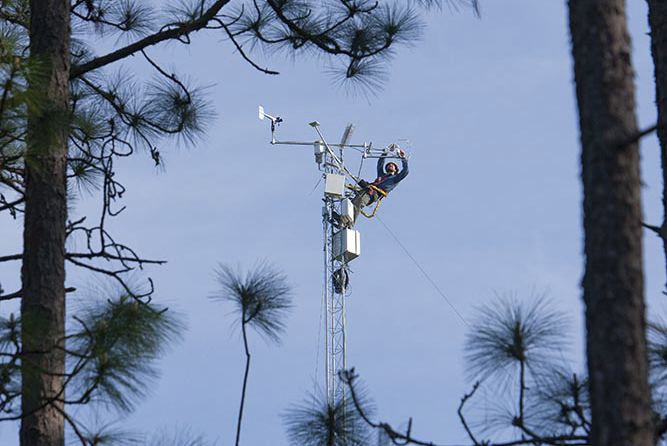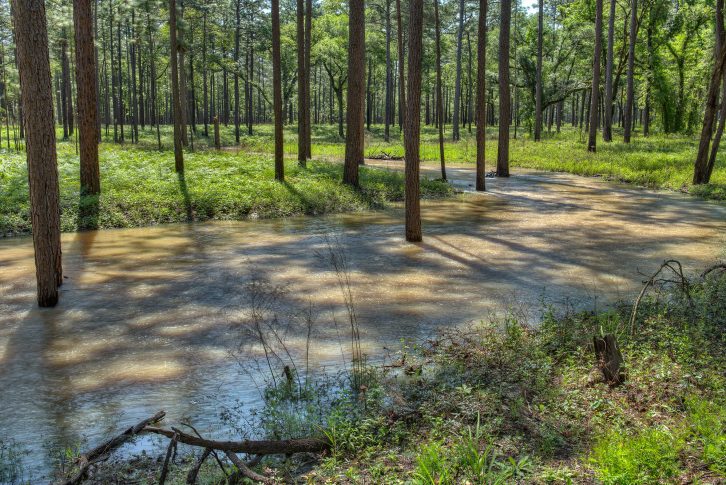Natural Resources Research & Management
Natural Resources Research & Management
These tangible benefits, often termed ecosystem services, give forests measurable value to people aside from the economic value of the timber.
This research theme centers on understanding and quantifying these values as they relate to longleaf pine woodlands, and identifying vulnerabilities of these ecosystems to climate variations, disturbances, and changes in management.
This theme builds on several interconnected long-term data sets at the Center, including measurements of
Numerous other studies have examined diverse topics ranging from tree defenses against bark beetle attack to the effects of nitrogen fertilization on plant diversity. Studies in this theme currently focus on the effects of fire suppression on forest resilience and ecosystem services, and the effects of Hurricane Michael on ecosystem function.


